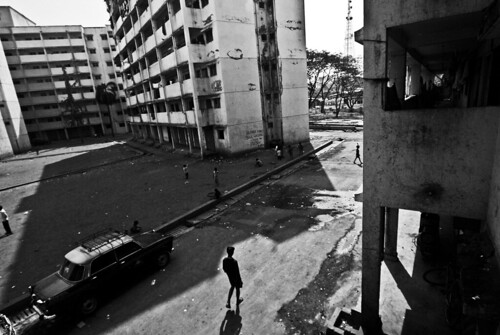
The sixteen building central cluster at Lallubhai Compound in Mankhurd rises ominously, each building separated from the other by a space that could park only a single car. Dominos in a hellish mass of concrete, only 4 buildings have access to direct sunlight on one side each. [ON GOOGLE MAPS] Housed in these rows of buildings are slum dwellers from all over Mumbai City. Welcome to Mumbai's slum resettlement housing projects.
No one moves to Lallubhai compound because they choose to, they move forced in the name of "slum rehabilitation". Their homes have been demolished under the claw of a bulldozer. A visit to Mankhurd teaches you rehabilitation means for very little here and all you will find is a concrete slum - one of far more dangerous social ramifications.
Here is what I saw.
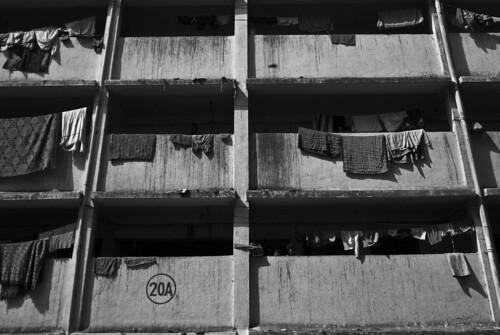
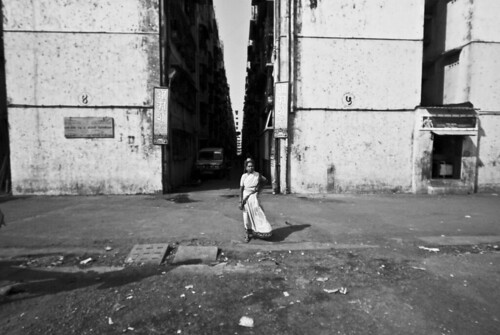
Four kilometers from the nearest station - though in close proximity to one of Mumbai's only operating open garbage dump, an abattoir and surrounded by a slum supposedly three times the size of Dharavi - Lallubhai compound looks like a case study for "ghetto-ization". Bombay's urban poor have been swept under the carpet where no one will see them.
1.
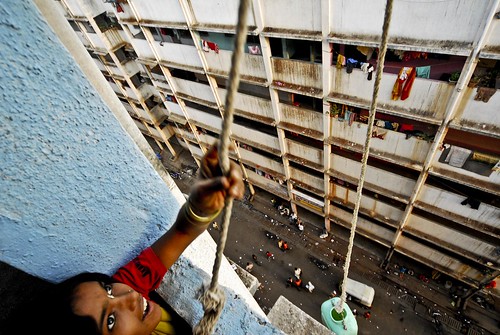
[ Seven stories high - the buildings have no running water or sanitation. Twelve year-old Avani on the seventh floor pulls up water in tiny plastic cans - that being her only source of water.]
2.
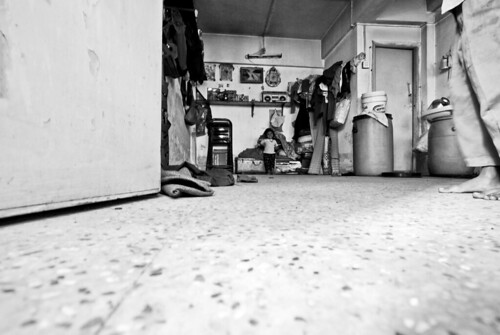
[225 sq foot windowless cells are alloted to each of the families. The families sometimes as large as 6 individual calls this their home.]
3.

[ Those whole lived near the railway stations of Kurla terminus,
Chembur and Matunga; those who once had dwellings along the pavements of the
famous P. D'Mello road near VT station; people from Byculla, Dadar, Parel,
you name it – they are all housed here. Moved away far away from original place or residence and work unemployment swells at the compound adding to the despair.]
4.
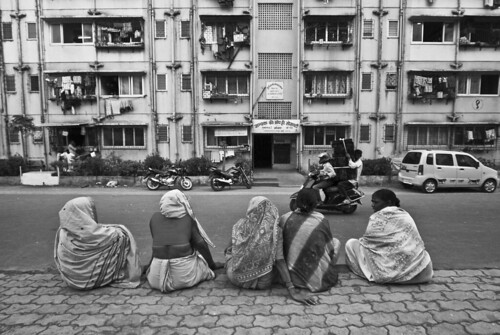
5.
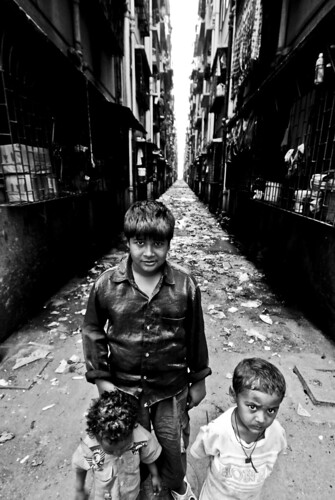
A boy, aged 15, swaggers past the curtain, whipping his knuckles clean of elbow grease. His face burned red with a teenage defiance that only burned brighter in his straddling walk. The two hundred and twenty five square foot room on the ground floor of the C Block in Lalubhai compound is filled with 7 cupboard sized video game machines each laminated in now worn out red plywood. He jostled through the crowd of mostly other teenage boys, pushing and pulling in a show of assertiveness. For those who didn't move he shouted out crude sentences in Marathi that ended with profanities chewed up and spat out just like the red gutka, which stained the walls that lined the stifling room. The only light in the windowless room was the flickering neon reflections of video games screens put to motion the jumbled sound of rap music, car crashes, gun shots, shouting and more profanity. The boy toggled at the joystick taking control of his character in the video game and watched on with glee. The 3D figure on the screen then took out what looked like an Uzi and shot at a bunch of people and then proceeded to steal a car and drive away only to be chased by cops. One rupee got you 60 seconds of game play and many coins were exchanged for more violence on screen.
On being asked whether he went to school he told me that he did sometimes but it was far and he couldn't go most times because his father did not have a regular income anymore. On being asked what he would do when he grew up, he pointed to the screen, laughed and said, "Boss, Don banna itna ahsaan hai." [Becoming an Don is easy]